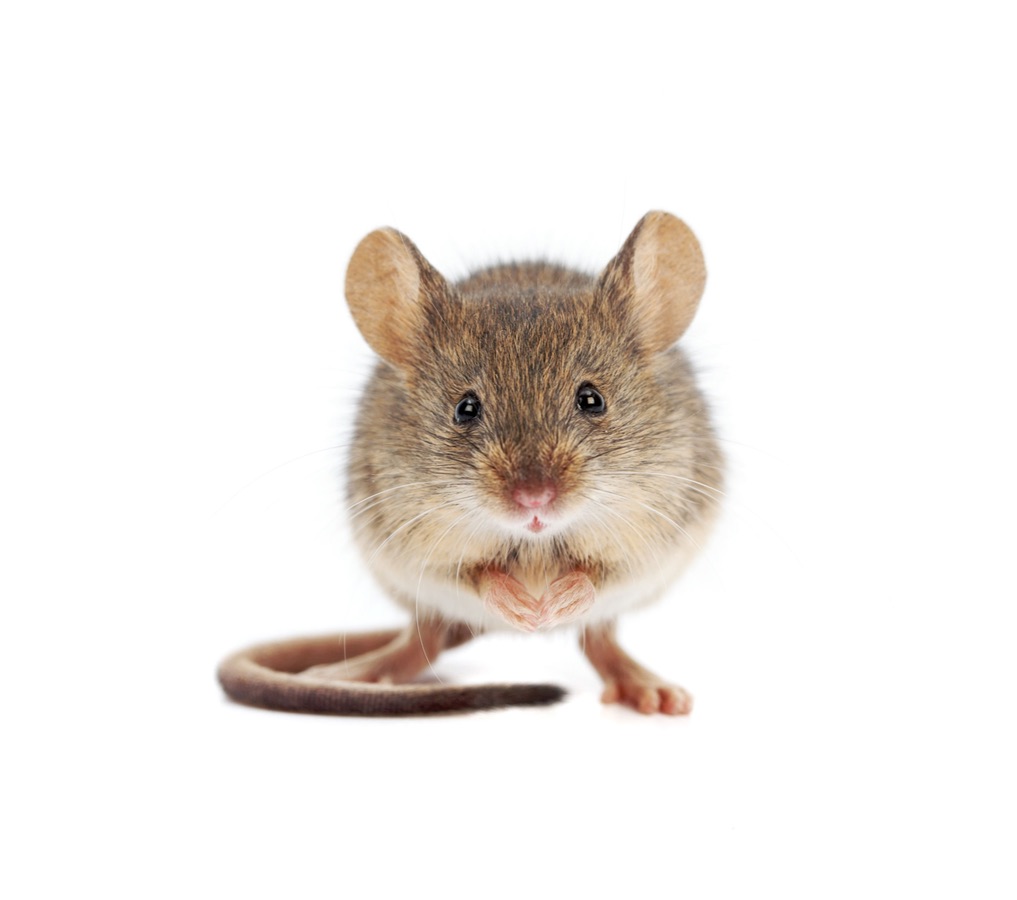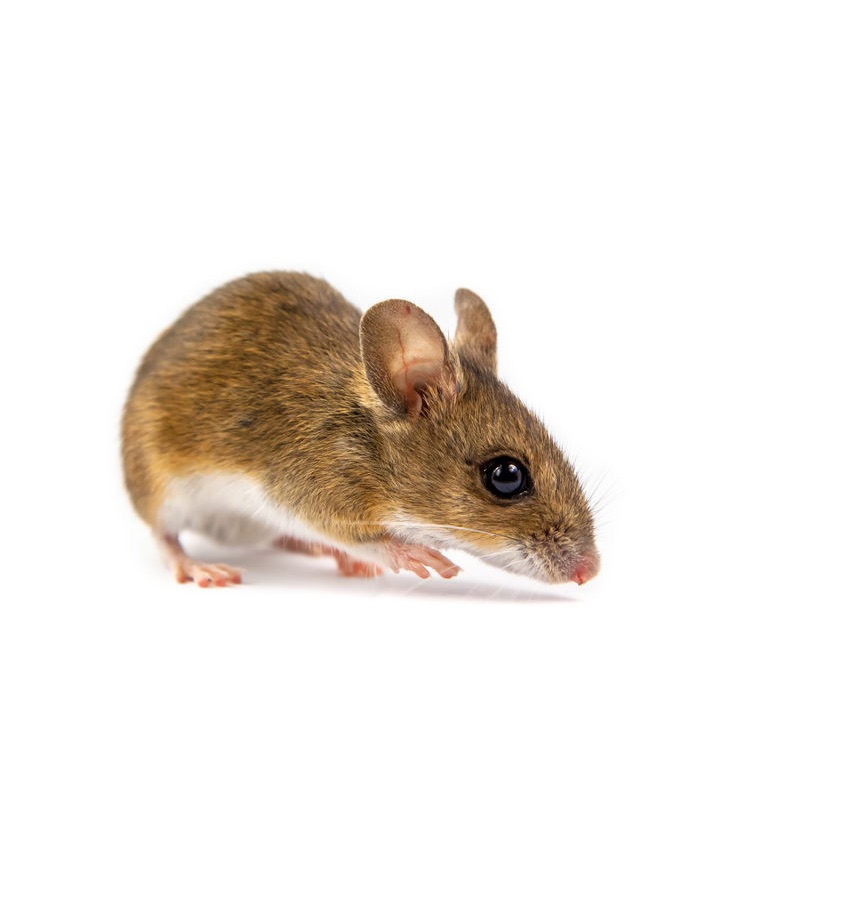Mice are often smarter than people think, these animals adapt well in and around our living environment. When it is cold, extremely hot or raining, the mice want a hiding place and then choose our house and the space around it, they can also often easily get food from us, such as bird food or our supplies. If you suffer from mice in one way or another, we are happy to help you combat your mouse problem.

Mice nuisance in your home is not nothing and can also be harmful to your health and cause a lot of stress. Mice can transmit diseases, which are then spread through your home through, for example, mouse droppings, urine and saliva. These critters can also cause damage, because they gnaw through everything. They don’t even do this to be annoying, but as a mechanism to sharpen their teeth. This gnawing damage can also be on the bark of the base of young trees or on turf or arable land.
Mice reproduce quickly, so that a starting mouse infestation can become very large in no time. In the worst case, mice can indulge their gnawing behavior on electrical wires and this would cause a short circuit or fire.
For these reasons, Protect Pest Control advises you to take mice control very seriously and to have the pest controlled carefully.
Salmonella, leptospirosis and hantavirus. A selection of diseases that a mouse can carry and that can be transmitted to humans through urine, saliva or faeces. These pathogens can cause food poisoning, transfer bacteria or numerous viruses when contacted through skin or contaminated food.
Mice also often cause damage due to their extreme gnawing behaviour. They eat around 3 to 5 grams in small bites a day and have a knack for finding food supplies. Because of all these little bits, there is often a good chance that several types of food will be affected and pathogens can be transmitted. Once affected, the food is no longer edible, because the risk of contamination and transfer of bacteria is then too great. Protect Pest Control therefore advises you to throw this food away just to be on the safe side.
Apart from these problems, there is also often immaterial damage to people who come into contact with mice. Many people have a certain fear of these animals or they become restless. You can also be shocked if a mouse suddenly shoots past you, precisely at an unexpected moment. Finally, people sometimes find it difficult to admit to the mouse problem, because they are afraid that this has to do with poor hygiene. This definitely doesn’t have to be the case, because mice just like dry, warm places where they can find food.

There are different types of mice that can be a nuisance to you. You can recognize the common house mouse (or Mus musculus L.) by its rather small legs and head, with fairly large ears. The body is about 7–10 cm long without the tail, which counts about the same or is sometimes longer. They weigh between 15–30 grams and are light brown to dark gray on their backs. Their belly is often a lighter color. A house mouse lives an average of one year and is mainly active at night.
A female gives birth on average 6 to 10 times in her life and gives birth to 5 or 8 cubs each time. A mouse young is already fully sexually mature after 2 months and since the gestation period of a mouse is only 3 weeks, the population can increase very quickly.

The wood mouse (aka Apodemus sylvaticus L.) is, in contrast to the house mouse, quite strong. It has a pointed muzzle, large ears, a long tail and large black eyes. The body is about 7–10 cm long without the tail, which measures about 7–11 cm. The wood mouse has a light yellow-brown to dark brown back, with a light belly. The back and ventral side are typically marked by an orange-brown dividing line. The wood mouse’s tail skin is paper thin in places. If you grab a wood mouse by the tail, there is a good chance that the skin will be stripped off.
A female gives birth on average 2 to 4 times a year and gives birth to up to 7 young at a time. Wood mice are real diggers and climbers and because of their long hind legs they can jump 60 – 65 cm high and 40 – 80 cm far. They prefer forest edges with dense undergrowth, open woodland areas with shrubs or gardens with trees and shrubs.
Characteristic for wood mice is that they often drag food boxes full of stones.

The field mouse (aka Microtus arvalis Pallas.) has a tail that is much shorter than the body. This takes up only ⅓ of the body. He has a plump build, with a plump muzzle, eyes and ears hidden in the fur, and a smooth, short-haired appearance. The body is about 9–12 cm long without the tail. You can recognize the field mouse by a brown to gray-brown back with color variations up to black. The belly is often lighter to light brown.
Field mice are excellent diggers and prefer to live in dry, sunny and sheltered places. Usually places with rough and dense vegetation. Only the top edge of the field mouse is clearly visible, because otherwise it is a stocky mouse that looks more like a ball of fur.
A female gives birth on average 5 to 6 times a year and gives birth to up to 6 cubs at a time. The young are sexually mature after 25 days and they live slightly longer than the house mouse and wood mouse, namely one year to 16 months on average.
Characteristic of field mice is that they almost never climb and jump.
Een wijfje werpt jaarlijks gemiddeld 5 tot 6 keer en krijgt per keer tot 6 jongen. De jongen zijn al na 25 dagen geslachtsrijp en zij leven iets langer dan de huismuis en bosmuis, namelijk gemiddeld een jaar tot 16 maanden.
Kenmerkend voor veldmuizen is dat zij vrijwel nooit klimmen en springen.

During the day these nocturnal animals will not easily show themselves, but you can often hear them on the basis of sounds in the evening or during the night. In addition, they will leave evidence of corroded packaging and sometimes even wiring. Protect Pest Control advises you to contact us as soon as possible in case of the following signals.
Especially when you find mouse droppings in the rooms, because this is quite concrete evidence that there are several mice in the area. A mouse will leave several droppings a day and you can find these in all places where the mice eat and walk. They look like large sprinkles and if the droppings are still soft and often black, there is a strong suspicion that the mouse plague is active. Protect Pest Control advises you in any case to clean up the mouse droppings as soon as possible, but that you do not touch them and be careful with contact when cleaning. It is also wise to check that area afterwards, because this is apparently part of the mice’s living environment. Many droppings are often found in places with food supplies, near kitchen cupboards and or along the wall.
You can also often find gnawing damage to furniture, baseboards or plastic containers where food is stored. If you find gnawing damage to your food supplies or cabling, please contact Protect Pest Control as soon as possible.
Because mice are curious, inquisitive creatures, they often walk through the entire room in the dark. A mouse’s sight isn’t as good as their sense of smell and hearing, so they don’t need light.
You’ve probably heard it: if you see one mouse, there are definitely more. This is not a myth. Mice live in groups and like to build their nests near food and water. They use twigs, paper, gnawed cardboard or insulation material for this. Their own hair is also used. It can easily happen that groups of mice can produce around 2,000 offspring per year and the plague can no longer be countered so easily at that time. Protect Pest Control therefore takes a mouse infestation very seriously and considers control in living areas necessary.
House mice are mainly found in buildings and often live above ceilings. Scratching noises in the evenings are often caused by mice looking for food. They can make themselves very small and fit through small holes, sometimes as small as a pencil. Cavity walls often provide fun climbing walls for the mouse and that’s how they get from one floor to the other.
Protect Pest Control can combat the mouse plague in a very reliable and professional manner and help you with prevention, prevention and advice to prevent this in the future. Leaving a mouse infestation untreated is strongly discouraged, because a mouse infestation can reach high numbers, making a mouse infestation more difficult to control.
Protect Pest Control is a professional pest controller and uses safe and successful ways to control a mouse infestation. Trying to combat the infestation yourself is often insufficient, because this requires some experience and the resources in the store are not sufficient and often only treat the symptoms.
We tackle the mouse problem at the source for you!
Protect Pest Control is een professionele ongediertebestrijder en hanteert veilige en succesvolle manieren om een muizenplaag te bestrijden. Zelf proberen om de plaag tegen te gaan is vaak onvoldoende, omdat dit enige ervaring vereist en de middelen in de winkel niet afdoende zijn en vaak een symptoombestrijding is.
Wij pakken voor u het muizenprobleem bij de bron aan!